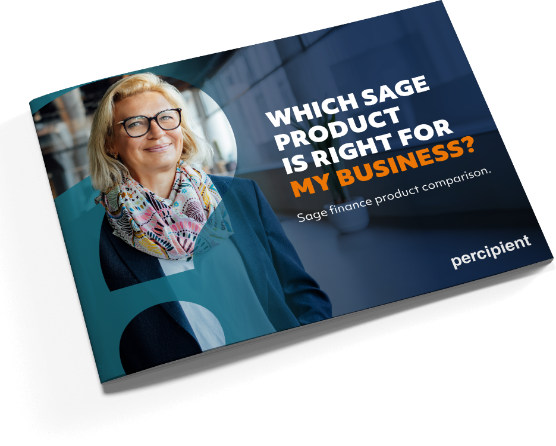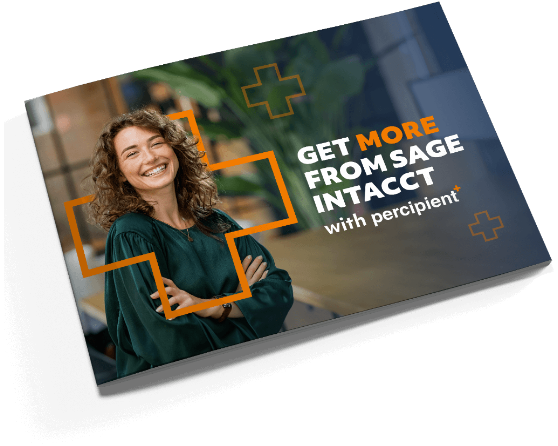Staying Competitive in Hospitality: Why Restaurants Need Modern Financial Management
By Laurie Stanwick, Percipient
The food service and restaurant sector has demonstrated enormous resilience in the last few years, but the wider economic landscape means that challenges prevail. Substantial supply chain disruption experienced in the wake of the pandemic, exacerbated by global political volatility, has resulted in some of the highest levels of inflation witnessed for decades. Along with rising interest rates and soaring energy costs, disposable income is being squeezed more so than at any point since the 1950s.
In parallel, food service companies and restaurants are having to navigate their way around a global labour shortage, while also minimising waste, improving food safety and traceability, and mitigating escalating supply chain costs. Crucially all of these challenges must be met while maintaining relevance and appeal to a new generation of customers.
The cost of living crisis inevitably stands to impact the restaurant and food service sector more sharply than others as dining out makes way for eating in. In order to keep pace, unprecedented levels of visibility are needed to ensure prompt responses to external threats and opportunities.
Tracking performance in all areas to understand demand, costs and opportunities is therefore crucial in the quest to optimise loyalty, protect market share and pursue growth.

Gatekeepers of Performance
As the gatekeepers of the very data which tracks, measure, analyses and reports on financial performance data, CFOs and finance professionals face enormous pressure to deliver the right insights in the right format, in a timely manner, in order to help manage these dynamics, and steer strategy.
Faced with this task, many are evaluating the capabilities and limitations of their current systems, reviewing the extent to which they align with the demands of modern markets, and can deliver the insights required. Many are still operating with inefficient, manual processes, supported by outdated legacy systems. Not only does this impede productivity and the visibility from which to drive the business in the right direction, but it can expose the organisation to untenable levels of risk.
Leveraging a Digital Advantage
Many restaurant and food service organisations are already moving to cloud-based financial management platforms which are designed to fully automate processes, delivering real-time insights which boost visibility, contextualise information and ultimately facilitate better decisions. Modern API-based frameworks facilitate vital interaction to ensure seamless information flow across different systems, allowing trends to be monitored closely and in real-time, so that action can be taken where necessary and appropriate.
Testament to this shift is Gartner’s survey of CFOs and finance leaders which points to the fact that 78% plan to maintain or increase enterprise-wide digital investments in the next two years, despite indications that cost reductions in other areas of the business are planned if inflation persists. When asked about their intentions for technology investment throughout 2023, both within their function and across the enterprise, 46% of respondents said they are scaling up their digital plans, while 32% said that no changes were planned.
But in a market flooded with options, all promising to deliver comparable benefits, what should the restaurant and food service businesses look for when considering the deployment of a new solution?
1 Be Clear on Business Goals
Having established a business case and identified what is required, it’s fundamental to maintain a focus on the core objectives of the project. When it comes to digital, the possibilities of what it can deliver are endless, but going off on a tangent which doesn’t fall within the remit of the project in hand will only seek to distract and delay proceedings.
2 Establish a Project Team & Set Out Realistic Timeframes
Bringing the right people together, securing buy-in from the board, and ensuring everyone collaborates to meet key milestones and achieve common goals, is crucial. Many projects are now delivered remotely, but it’s important to ascertain at the outset, how much time, if any, should be devoted to on-site face-to-face meetings. In the wake of the pandemic, sentiment is somewhat divided and while some customers will place enormous value on face-to-face, others are entirely comfortable with a virtual delivery model.
3 Adopt the Right Metrics
It goes without saying that the right modern systems will free up hours, days or weeks of time, replacing manual processes and improving accuracy by removing the risk of human error, the value of which can be vast. However, it’s crucial to understand the scale of less measurable benefits such as improved cash flow, better risk management and the superior performance potential associated with having a flexible, scalable platform for growth. When establishing a business case, both financial, tangible benefits and longer-term strategic benefits should be set out.


Select the Right Cloud Deployment Model
The cloud versus on-premise debate has all but become defunct when it comes to financial management, as best-in-class and cloud become increasingly synonymous. The conversation has evolved from discussion around the merits of cloud versus on-premise to a more detailed analysis of the different types of cloud, from SaaS to cloud-native applications. Now, in their quest to leverage digital for superior operations, service and competitive edge, restaurants and food service businesses typically weigh up the respective merits of a hosted, SaaS model or pure cloud model, also known as public or multi-tenant cloud.
While SaaS brings substantial benefits, as software physically resides at a remote data centre operated by an expert third-party hosting provider, these are limited. While you are not responsible for the hardware, which can be a significant cost and resource benefit, because the model works by providing you with a unique “instance” of your financial management system on a dedicated server, costs for customisations, upgrades, integration, support and service are comparable to an on-premise model.
The full potential of the cloud can only be realised via a cloud-native/multi-tenant model, whereby updates are delivered automatically, in a standardised way, directly to the desktop in a similar fashion to the way we experience on our phones.
As well as flexibility via virtual seamless upgrades which improve operating efficiency, the seamless remote access enabled by a cloud model also supports skills acquisition by facilitating access to a larger pool of talent, both from a diversity and geographical perspective. While many roles in this industry can’t be performed remotely, for those that can, the days of being confined to candidates in and around the hotel simply no longer exist. In turn, this can result in a more cost-effective infrastructure from which to pursue strategies.
And when it comes to bringing new entities on board, a cloud-native model means that there is no additional cost or complexity. Whether it’s the acquisition of new premises, overseas investment, or a shift in business model to reflect shifts in consumer demand, the software delivers consistency, scalability and modern capabilities from which to pursue strategy without the distraction of software maintenance.
A Future-Proof Model
The resilience shown by the restaurant and food service industry is a testament to its ability to embrace innovation and new ways of working in its quest to stay current and service the modern consumer in a way which simultaneously garners loyalty and delivers profitability.
Ensuring the right financial management platform from which to steer the business will unequivocally deliver the speed and depth of insights from which to expedite and consolidate this shift and instil the foundations from which to navigate further change as it unfolds in the years ahead.
For more information on how Percipient can help you on your digital journey and support you in selecting the right system for your business get in touch or call us on 0166 871332 to speak to a member of the team today.




